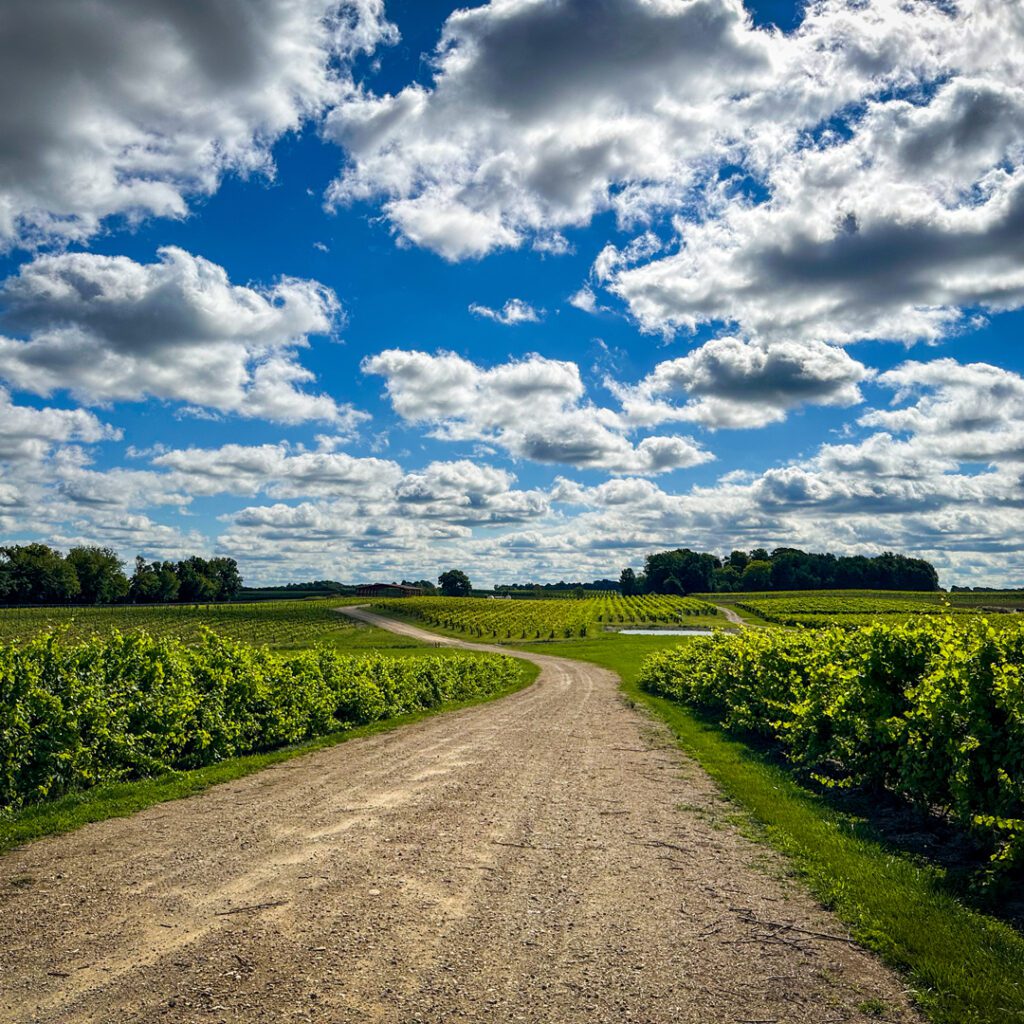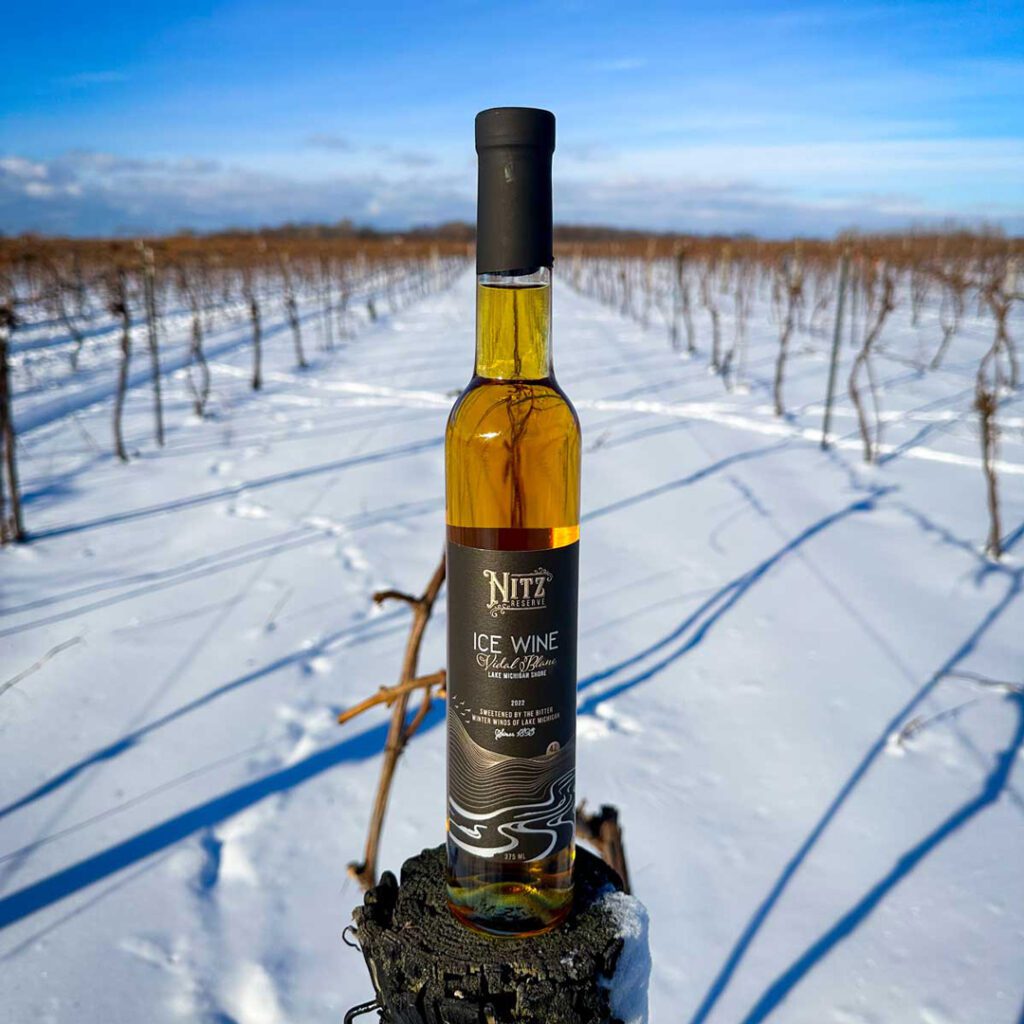Inside the Vines:
Stories, Craft, and Behind-The-Scenes at Nitz Wines.

Flourless chocolate torte and ice wine, it doesn’t get much better than this.
We asked Chef Tim at Vintage Inn at Veritas Estates to share his flourless chocolate torte recipe with us — a nice compliment to our Chambourcin Ice Wine. So the next time you want to wow your guests, or just yourself, you can pull this one out, along with a nice bottle of Nitz Reserve Chambourcin Ice Wine. Thanks Chef Tim. Flourless Chocolate Torte – BONUS THIS IS GLUTEN FREE! 1 ¼ cups (213 grams) semisweet chocolate chips1 stick (113 grams) unsalted butter3/4 cup (150 grams) granulated sugar1 teaspoon instant espresso powder, optional1/4 teaspoon fine salt1 teaspoon vanilla extract3 large eggs plus 1 egg yolk1/2 cup (43 grams) Dutch-process cocoa½ cup (120 grams) heavy cream, chilled 1. Melt the chocolate and butter. In a large microwave-safe bowl, heat the chocolate chips and butter in 30-second increments, stirring between each, until just barely melted. Stir until smooth. You can also do this step in a double boiler on the stove, or in a heatproof bowl over a small saucepan, on medium-low heat, if you prefer. 2. Add the sugar, espresso powder (if using), salt and vanilla. Whisk until combined. Let cool to room temperature. 3. Add the eggs. Add in the eggs and yolk all at once, vigorously whisking until smooth. 4. Mix in the cocoa powder. Whisk until just combined. 5. Whip the heavy cream. Beat the cream to medium peaks. Be careful not to overbeat your cream here. You don’t want stiff peaks for this recipe. 6. Fold the whipped cream into the chocolate

The Best Wineries in Southwest Michigan
When exploring a new wine region, recommendations are always appreciated. In this article, we’ve curated a great list of the best wineries in Southwest Michigan. Before we get to that list, we’ll share a little background on Southwest Michigan as a wine destination, the grapes grown here and a few tips for visiting the region. Two designated wine regions are located in Southwest Michigan – Fennville AVA and Lake Michigan Shore AVA. Both areas are home to several unique factors that contribute to this region being home to several of the best wineries in Southwest Michigan. The climate is influenced by Lake Michigan’s nearby shores, which help prolong the growing season a few extra weeks and allow grapes to ripen on the vine more fully. This warmer climate allows many red grapes to thrive here vs the wine regions further north. German settlers initially settled in the area in the mid-1800s, several of whom brought their knowledge and winemaking expertise. The knowledge is still employed among the best wineries in Southwest Michigan. Top Grape Varieties The best wineries in Southwest Michigan are home to diverse grape varieties. Some of the top grapes grown in the region are: Tips for Planning a Visit to Southwest Michigan The Best Wineries in Southwest Michigan We may be biased, but many of our friends and neighbors offer an incredible selection of quality wines. Each with a unique perspective, here are a few of the best wineries in Southwest Michigan to check out online or

An Introduction to Michigan Wine
The Michigan wine industry is home to 5 AVAs (American Viticulture Areas) and is the 7th largest wine producer in the United States. This article will provide a brief background on the history of Michigan wines, the growing regions, tourism and challenges facing Michigan wine producers. The impact of the Michigan wine industry can be felt in terms of total dollars (bringing in over $6 billion annually) as well as the number of businesses and workers that support the industry, not to mention wine tourism. With around 200 wine producers in the state, more than 25,000 jobs are created by and in support of the Michigan wine industry. Its grape-growing regions are located mainly along the lakeshore in the North and Southwest corner of the state. Grapevines are planted on more than 3,600 acres. Over 50 different grape varieties make their way into Michigan wines. Located far north, the state is well-known for producing superior cool climate grapes like Reisling, Pinot Noir, and Vidal Blanc. A Brief History Of Michigan Wine Michigan Wine Regions Lake Michigan Shore: It has unique terroir and growing conditions in the southwest corner of Michigan. The “Lake Effect” moderates temperatures for the vineyards planted along the lakeshore. This serves to prolong the growing season well into late autumn. It’s also located much further south than other Michigan wine regions, down on the 42 parallel (the same as Rome, Italy). The warmer climate allows red varietals (Cabernet Franc and Pinot Noir) to thrive here, unlike other

Vidal Blanc: The White Wine You Should Be Drinking Right Now
For those unfamiliar with the delicious and versatile wine called Vidal Blanc, you are not alone! This article will help explain what you have been missing and why you should waste no time hopping on the Vidal Blanc train. We’ll cover everything you need to know about Vidal Blanc, including its origins, characteristics and flavors, growing conditions, and winemaking practices. And before you serve up your next bottle of Vidal Blanc, you’ll have some food pairing recommendations and how this grape stacks up against other more well-known white wines. What is Vidal Blanc, and where did it come from? Vidal Blanc is best known for its incredibly rich and tingly ice wines. You’ll also find examples of still and sparkling wines made from the Vidal Blanc grapes. The Vidal Blanc grape is a French hybrid created by Jean-Louis Vidal (for whom the grape was named) during the 1930s. Vidal had intended to create a grape that could be used to produce Cognac in the cool, maritime climate of western France. It was created by crossing the Ugni Blanc and Rayon d’Or grapes. Unfortunately, the grape never took off in France, and it is not allowed in the production of Cognac under the rigid French winemaking rules. It, however, finds its way across the Atlantic to some of the more frigid parts of North America. Vidal Blanc is widely planted in Canada, Upstate New York, Michigan, and a few places a little further South. Canada’s Niagara Peninsula and Ontario are famous
